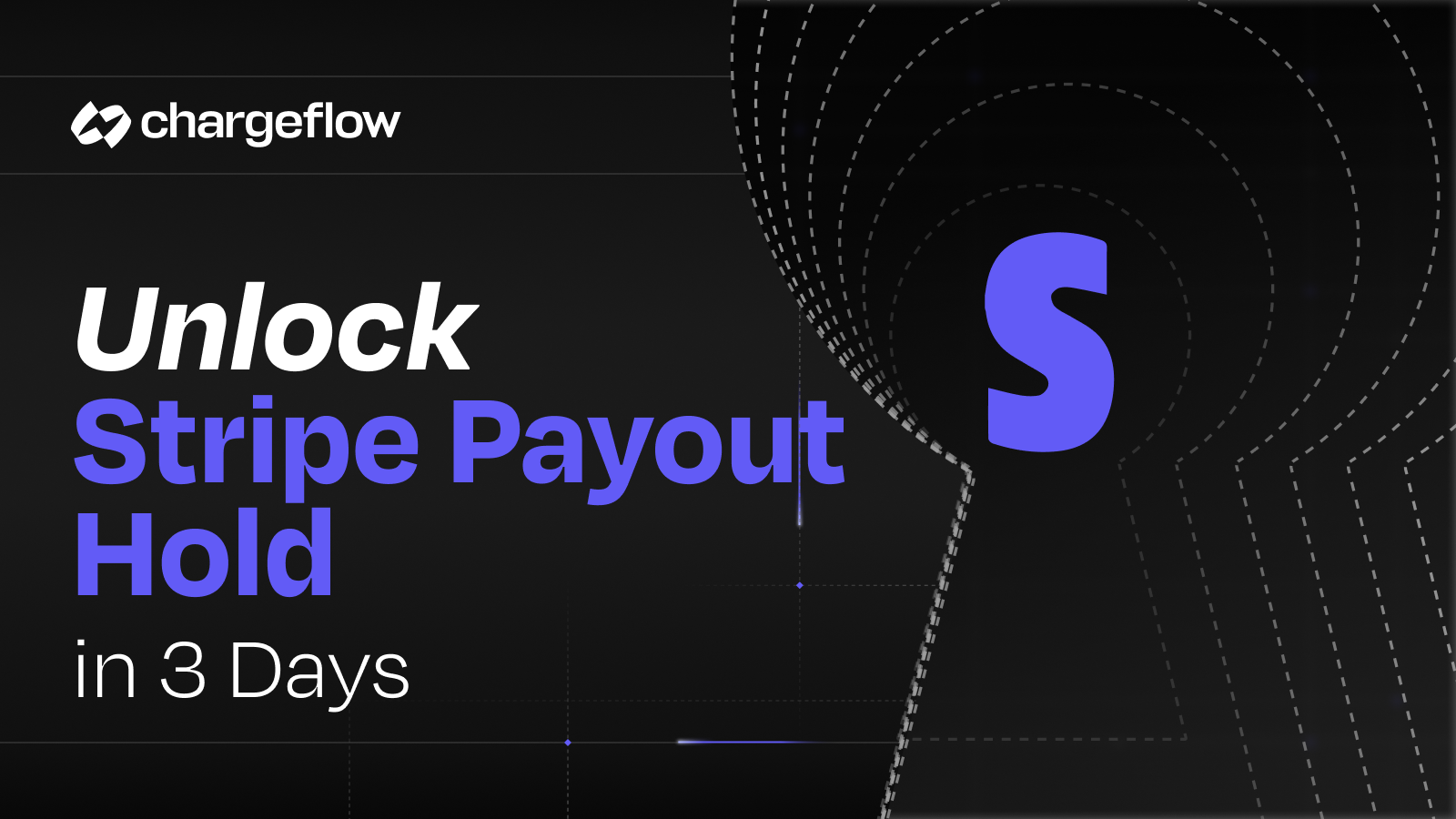Unveiling the Curtain on Types of Chargeback Frauds

Chargebacks?
No longer your problem.
Recover 4x more chargebacks and prevent up to 90% of incoming ones, powered by AI and a global network of 15,000 merchants.
Chargebacks are never the cost of doing business. Having knowledge about types of chargeback frauds can reduce the occurrence of Fraud significantly.
Welcome to the eye-opening world of chargeback frauds, where as a merchant, you must stay vigilant to protect your hard-earned profits! Picture this: you're running a successful online store, and orders pour in. But amidst the euphoria of booming sales, an invisible threat lurks in the shadows – chargeback frauds.
Imagine a scenario where customers make purchases, receive goods or services, and then unexpectedly initiate chargebacks – disputing the transaction with their banks. Yes, you heard that right! Chargebacks can strike like stealthy assassins, robbing you of your revenue and leaving you helpless.
Not only do these fraudulent chargebacks lead to monetary losses, but they also result in hefty fines and damaged relationships with payment processors. The consequences can be catastrophic for your business's reputation and financial health.
But fret not, dear merchant! The journey to fortifying your enterprise against chargeback fraud begins with awareness. In this article, we'll unravel the different types of chargeback frauds haunting the e-commerce landscape. From friendly fraudsters masquerading as genuine customers to identity thieves stealing your hard-earned trust – we've got it all covered!
Let's embark on this journey together and emerge victorious against these cunning foes!
1. Friendly Fraud
Picture this: A customer makes a purchase, enjoys your product or service, but decides to dispute the charge later, claiming it was unauthorized or not received. Sounds unfair, right? That's the essence of Friendly Fraud – when genuine transactions are falsely labeled as fraudulent chargebacks.
How Does Friendly Fraud Happen?
Friendly fraud often starts innocently enough, driven by misunderstandings or lapses in communication. Here are some common scenarios:
- Forgetful Purchases: Customers might forget about their purchases, leading them to believe they never made the transaction.
- Family or Friends: Shared credit cards within households can lead to confusion over legitimate charges.
- Buyer's Remorse: Some customers regret impulse buys and use chargebacks as an easy way to undo the purchase.
2. Non-Receipt Fraud
As a merchant, staying vigilant against fraudulent activities is crucial for the success and sustainability of your business. One of the most cunning schemes that can harm your bottom line is Non-Receipt Fraud.
This type of fraud involves customers claiming that they never received the products or services they purchased, leading to chargebacks and potential losses for your business. Here, we'll dive into the world of Non-Receipt Fraud, equipping you with the knowledge and tools to safeguard your enterprise.
Understanding Non-Receipt Fraud
Non-Receipt Fraud Defined: Non-Receipt Fraud occurs when customers falsely assert that they haven't received the items they ordered, despite you fulfilling their purchases.
Tactics Employed by Fraudsters
- False Claims: Fraudsters might make false statements, insisting they never received the product even after delivery.
- Incomplete Deliveries: Some might claim partial receipt, alleging only some items arrived to benefit from refunds.
3. Card-Not-Present (CNP) Fraud
Card-not-present (CNP) fraud is a type of chargeback fraud, but not all CNP fraud results in a chargeback. CNP fraud is any fraudulent activity that occurs when the cardholder is not physically present to make the purchase. This can include online purchases, phone purchases, and even mail-order purchases.
When CNP fraud does result in a chargeback, it is typically because the cardholder disputes the transaction with their bank. This can happen for a variety of reasons, such as:
- The cardholder did not authorize the purchase.
- The product or service was not delivered as promised.
- The product or service was defective.
In some cases, CNP fraud may also result in a chargeback even if the cardholder does not dispute the transaction. This can happen if the merchant needs help to provide sufficient evidence to the bank that the purchase was legitimate.
4. Triangulation Fraud
Among these malevolent schemes, "Triangulation Fraud" stands tall as a cunning and deceptive strategy employed by fraudsters to take advantage of your e-commerce platform. So, let's dive into this shady world of Triangulation Fraud and learn how you can safeguard your business from its treacherous grasp!
What is Triangulation Fraud?
Triangulation Fraud is a sneaky tactic where fraudsters use innocent customers as pawns in their wicked game. They set up fake online stores or marketplace listings, posing as legitimate sellers offering enticing products at unbelievable prices.
- Innocent customers, lured by the alluring offers, place orders and make payments to these deceitful sellers, believing they'll receive genuine products.
- However, the cunning twist lies in the fraudsters themselves purchasing the actual products from legitimate sellers, using the stolen credit card information of unsuspecting victims.
- The purchased products are then shipped directly to the customers who placed orders in the fake store. The victims, unaware of the criminal plot, receive the goods they ordered, while the real cardholder is left to deal with the unauthorized charges.
The Devastating Impact on Merchants
Triangulation Fraud casts a long shadow of consequences on merchants like you, leaving you grappling with significant challenges:
- Revenue Loss: Fraudulent chargebacks and refunds initiated by victims result in substantial revenue losses for your business. This hurts not only your bottom line but also your reputation.
- Credibility Damage: Customers who fall victim to Triangulation Fraud might associate the negative experience with your brand, even though you were not directly involved in the scam. This could lead to damaged trust and a tarnished image.
- Payment Processor Scrutiny: Experiencing a surge in chargebacks due to Triangulation Fraud could raise red flags with your payment processor, putting your merchant account at risk of termination or higher processing fees.
5. Refund Abuse leading to Chargeback Fraud
Refund abuse occurs when customers exploit your return policy for personal gain. They might use the product and then ask for a refund without a legitimate reason. This unfair practice can lead to revenue loss, reduced trust in your brand, and operational inefficiencies.
Spotting Chargeback Fraud
Chargeback fraud, also known as "friendly fraud," happens when a customer disputes a valid transaction with their bank instead of contacting you directly. Fraudsters abuse the chargeback process to get a refund while retaining the product or service, leaving you with both financial loss and administrative burdens.
6. Digital Goods Frauds
As a merchant in the digital realm, you're no stranger to the conveniences and opportunities that come with selling digital goods. But amidst this modern landscape lies a lurking danger that can undermine your hard-earned success – chargeback frauds.
Understanding the Risks
- Selling digital goods offers convenience to customers, but it also exposes you to unique risks of chargeback fraud.
- Digital products are intangible, making it easier for unscrupulous buyers to claim non-receipt or unauthorized transactions.
- The intangibility of your goods can make it challenging to present evidence in disputes, leaving you vulnerable to losses.
Common Types of Digital Goods Frauds
- Non-Receipt Scams: Fraudsters claim non-receipt of digital goods, exploiting their intangible nature to deceive you.
- Serial Refunders: Some individuals exploit lenient refund policies to abuse your generosity repeatedly.
- Account Takeovers: Cybercriminals gain access to customer accounts, making unauthorized purchases and charging them back later.
- File Manipulation: Buyers alter or duplicate digital files, then file a chargeback claiming they received a faulty product.
7. Subscription-Based Services Fraud
Subscription fraud occurs when criminals use stolen identities or fabricated information to subscribe to your services with malicious intent. Fraudsters may abuse your trial periods or introductory offers, causing financial losses and undermining your subscription model's credibility.
The Challenges You'll Face: Managing Subscription Fraud
- Identifying genuine customers from fraudulent ones can be a daunting task, as fraudsters become increasingly sophisticated in their tactics.
- Fraudulent accounts may generate chargebacks, tarnishing your reputation and leading to financial penalties from payment processors.
8. Identity Theft and Chargeback Fraud
Identity Theft involves the malicious acquisition of personal information, such as names, addresses, credit card numbers, or social security numbers, without the victim's knowledge or consent.
- A Target for Fraudsters: Fraudsters exploit stolen identities to make unauthorized purchases, leaving you to deal with the chargebacks.
How Fraudsters Use Stolen Identities
- Impersonation: Criminals pretend to be legitimate customers, placing orders with stolen credentials, making it hard for you to distinguish them from real buyers.
- High-Value Purchases: They often target high-value items, escalating the impact of chargebacks on your revenue and reputation.
9. Chargeback "Friendly" Fraud
One deceptive tactic that could take you by surprise is "Friendly" Fraud, masquerading as an innocent dispute while draining your revenue. Don't let the name fool you; this fraud isn't friendly at all.
What is "Friendly" Fraud?
- Deceptive Intent: "Friendly" Fraud occurs when a customer makes a purchase, receives the product or service, and then initiates a chargeback while retaining the item or benefit.
- Intentional Misrepresentation: In most cases, the customer knows exactly what they're doing, intending to get away with both the purchase and their money.
Unmasking the Buyer's Remorse
- Post-Purchase Guilt: One common scenario is the buyer's remorse cover-up. The customer regrets their purchase but instead of returning the product through regular channels, they file a chargeback, knowing it will cost you time, money, and potential penalties.
- Easy Evasion: Some customers find it more convenient to abuse the chargeback process instead of dealing with return policies or customer support.
Strategies for Countering "Friendly" Fraud
- Robust Transaction Records: Keep meticulous records of customer interactions, including order details, delivery confirmations, and communication. These records serve as valuable evidence in chargeback disputes.
- Transparent Communication: Maintain open lines of communication with your customers. Send order confirmations and shipping notifications, making sure they are aware of any potential refund or return policies.
- Efficient Customer Support: Provide prompt and helpful customer support. A dissatisfied customer may be less likely to initiate a chargeback if their concerns are addressed professionally and promptly.
- Customer Authentication: Implement additional security measures, such as 3D Secure, to verify the customer's identity and prevent fraudulent transactions.
- Friendly Chargeback Alerts: Utilize chargeback alert programs to receive early notifications of potential chargebacks, giving you a head start on resolving the issue.
Turning the Tide Against "Friendly" Fraud
Don't let "Friendly" Fraud erode your profits and trust in your business. Stay informed, proactive, and equipped with the right tools to defend yourself against these deceptive chargebacks. By understanding the tactics fraudsters use and taking preventative measures, you can secure your business and keep the revenue where it belongs – in your hands.
Protect Yourself from Chargeback Fraud with Chargeflow
Chargeflow is a fully automated chargeback management solution that can help merchants protect themselves from chargeback fraud. Chargeflow uses machine learning and artificial intelligence to generate the most comprehensive chargeback evidence in the world, custom-tailored to your store, and send on your behalf.
Chargeflow has a proven track record of helping merchants recover chargebacks. The average merchant using Chargeflow recovers 90% of their chargebacks. Chargeflow also automates the entire chargeback management process, so you can save time and focus on running your business.
If you are an eCommerce merchant, then Chargeflow is a valuable tool that can help you protect your bottom line and improve customer satisfaction.
Here are some additional benefits of using Chargeflow:
- Increased chargeback recovery rates: Chargeflow has a proven track record of helping merchants recover chargebacks. The average merchant using Chargeflow recovers 80% of their chargebacks.
- Reduced time and effort: Chargeflow automates the entire chargeback management process, so you can save time and focus on running your business.
- Improved customer satisfaction: Chargeback disputes can be a source of customer dissatisfaction. Chargeflow helps you resolve disputes quickly and efficiently, so your customers can get back to enjoying your products or services.
If you are interested in learning more about how Chargeflow can help you protect yourself from chargeback fraud, please visit their website or contact them today.

Chargebacks?
No longer your problem.
Recover 4x more chargebacks and prevent up to 90% of incoming ones, powered by AI and a global network of 15,000 merchants.






























.png)








